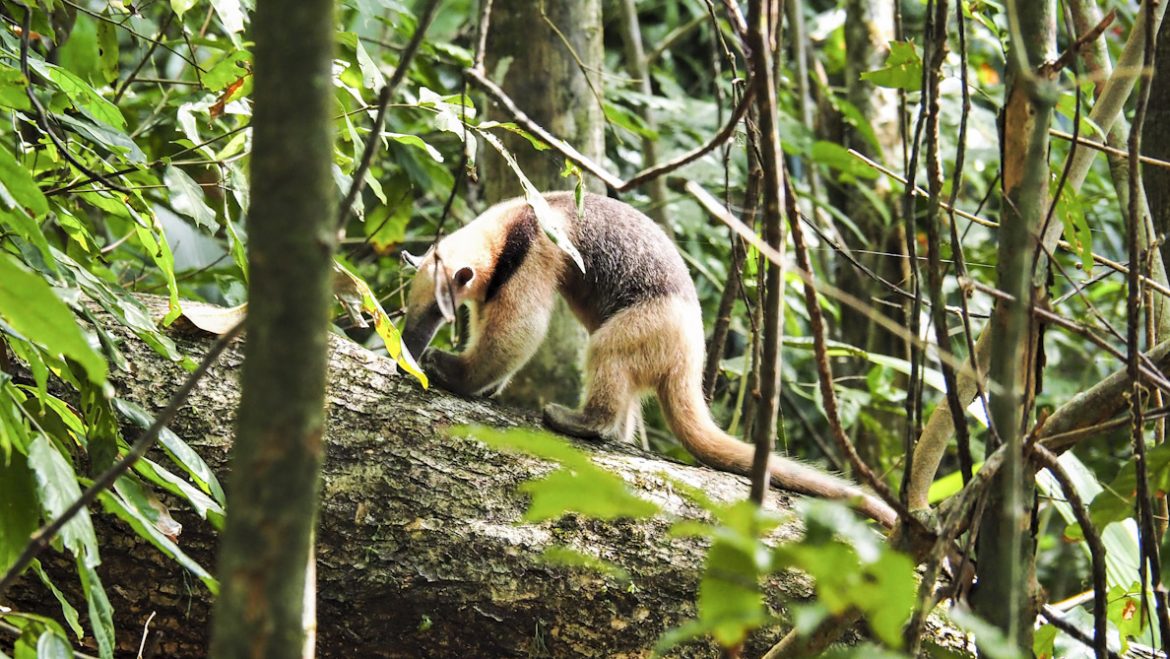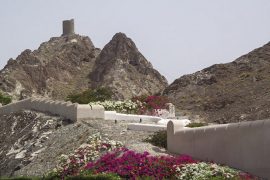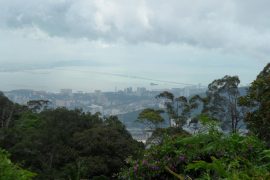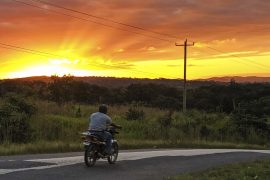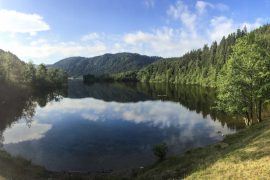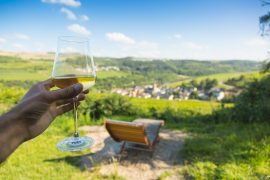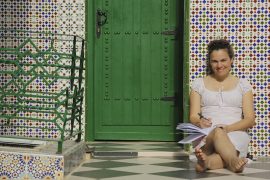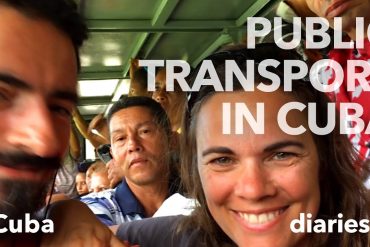‘Welcome to the jungle’. Those were the words Axl Rose and his band mates from Guns‘n Roses yelled on my DiscMan when I was fifteen and walked from school to the Top Twenty milk bar in Limpertsberg (if you’re from a younger generation and happen to ignore what a DiscMan is, that’s a portable CD player). I knew the words of said song, I even knew the chords, but I had no clue what the jungle really was.
I suspected it to be quite different from what Mowgli showed me a decade earlier on Disney’s The Jungle Book. Nicolas Hulot and his Ushuaia TV-series seemed to be way more trustworthy on that subject but nevertheless: I had to find out for myself what the jungle really was like. I had to see it, I had to hear it and I had to feel it! So, one would think as soon as I had gathered enough money I would jump into a plane and fly to the South Americas to plunge into the Amazon Rainforest, right? Well, not quite. In fact, it took me twenty-five years to find myself in a Cessna headed to Puerto Jimenez on Costa Rica’s Osa Peninsula.
I had to find out for myself what the jungle really was like. I had to see it, I had to hear it and I had to feel it!
Now, if you bear in mind that more than 50% of Costa Rica’s territory is covered in Rain Forest and approximately 6% of our planet’s wildlife inhabits this small country, you inevitably conclude that this should do the trick. More so if you learn that the Osa Peninsula and its Corcovado National Park are described by National Geographic as one of the most biologically intense places on earth. So, let’s see if the most remote patch of land in Costa Rica welcomes us to the jungle.
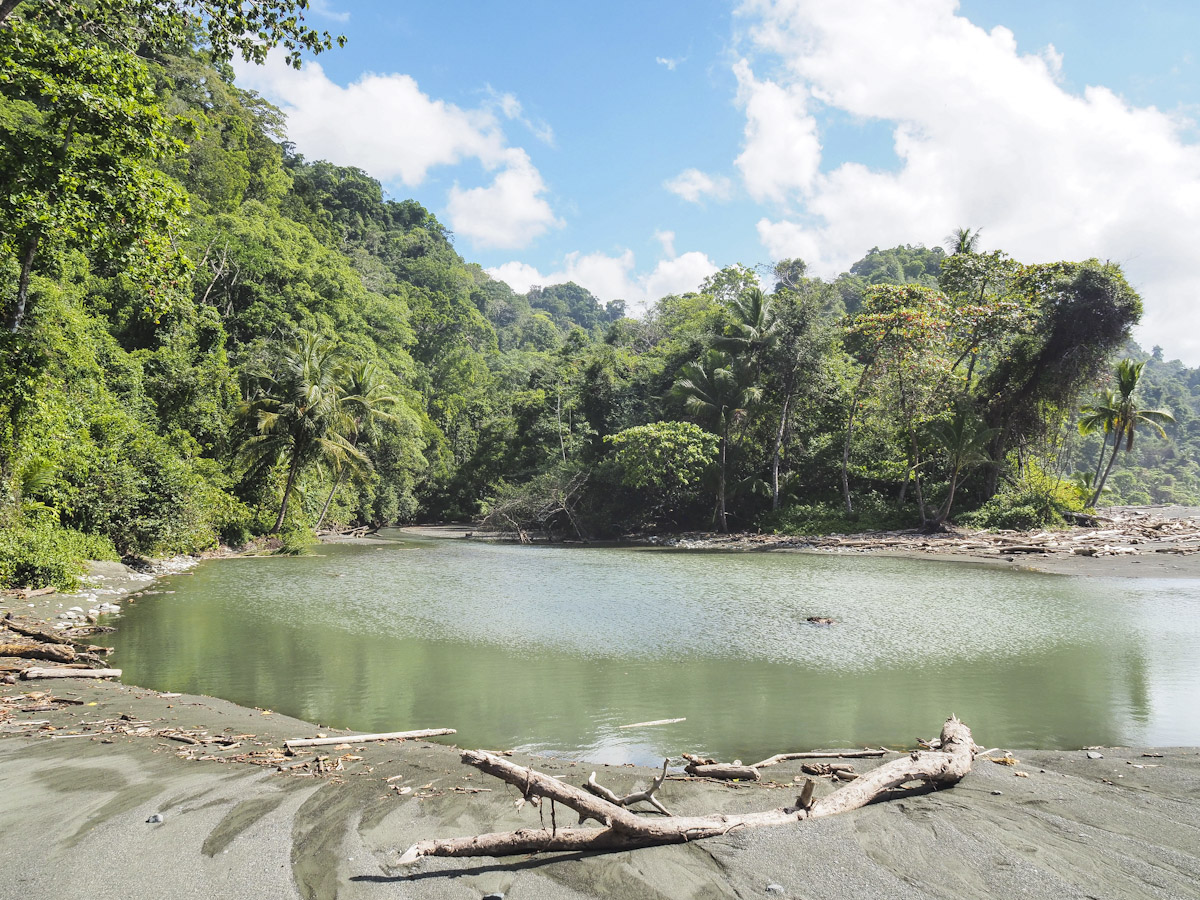
Nadine and I opted for the La Leona to Sirena Trail. A strenuous twenty kilometre hike that takes at least seven hours and comes with river crossings, beach crossings, some mild climbing and apparently lots and lots of wildlife.
In order to keep Corcovado said remote patch of land, you have to get a permit to enter the park. Costa Rica only issues a very limited number of permits per day, so if you think of this as an on-the-fly adventure; forget it. Furthermore, entrance is only allowed if accompanied by an officially appointed guide.
We met our guide at 5h30 in the morning near a bakery in Puerto Jimenez. He introduced himself as Machete which made me wonder if the name reflected the aim? Would we have to cleave our way trough thick foliage and branches, like Werner Herzog’s Fitzcarraldo? Not quite…
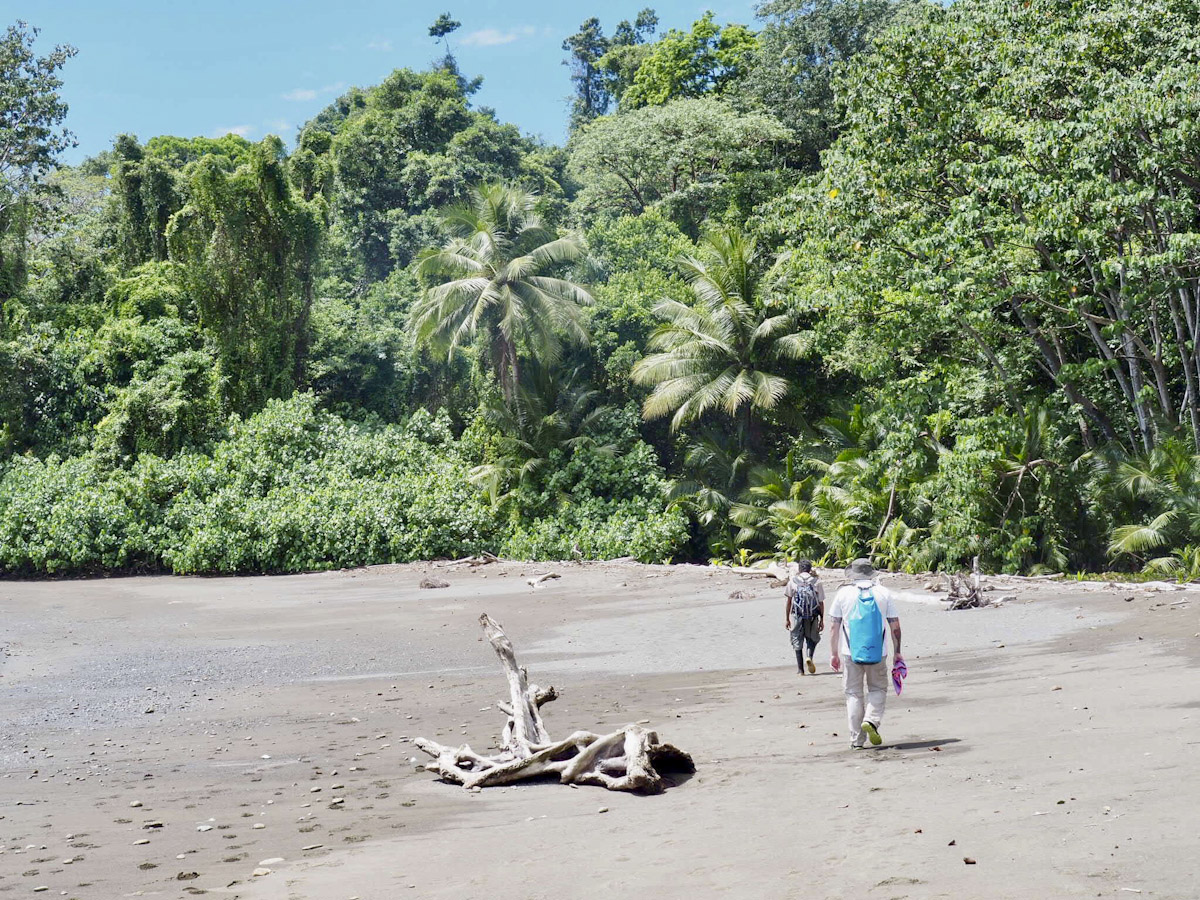
Machete told us we had to take at least four to five litres of water into the park since the hike would be no piece of cake. We were advised to buy some sandwiches at said bakery, which had to be eaten before entering the park since you are not allowed to bring food into the park, except for granola bars and other kinds of bird seed. The whole Bakery-thing might be a put-up job but who cares; we’re finally going to see the jungle, right?
We all embarked on a collectivo, Costa Rica’s shared taxis, for a one-and-a-half-hour drive to Carate where La Leona Station marks the entry of the park. Now was the time to eat our sandwiches, sign a registration form (pledging to bring no food into the park and waiving your rights if bitten by a jaguar or swallowed by a boa constrictor) and off we went!
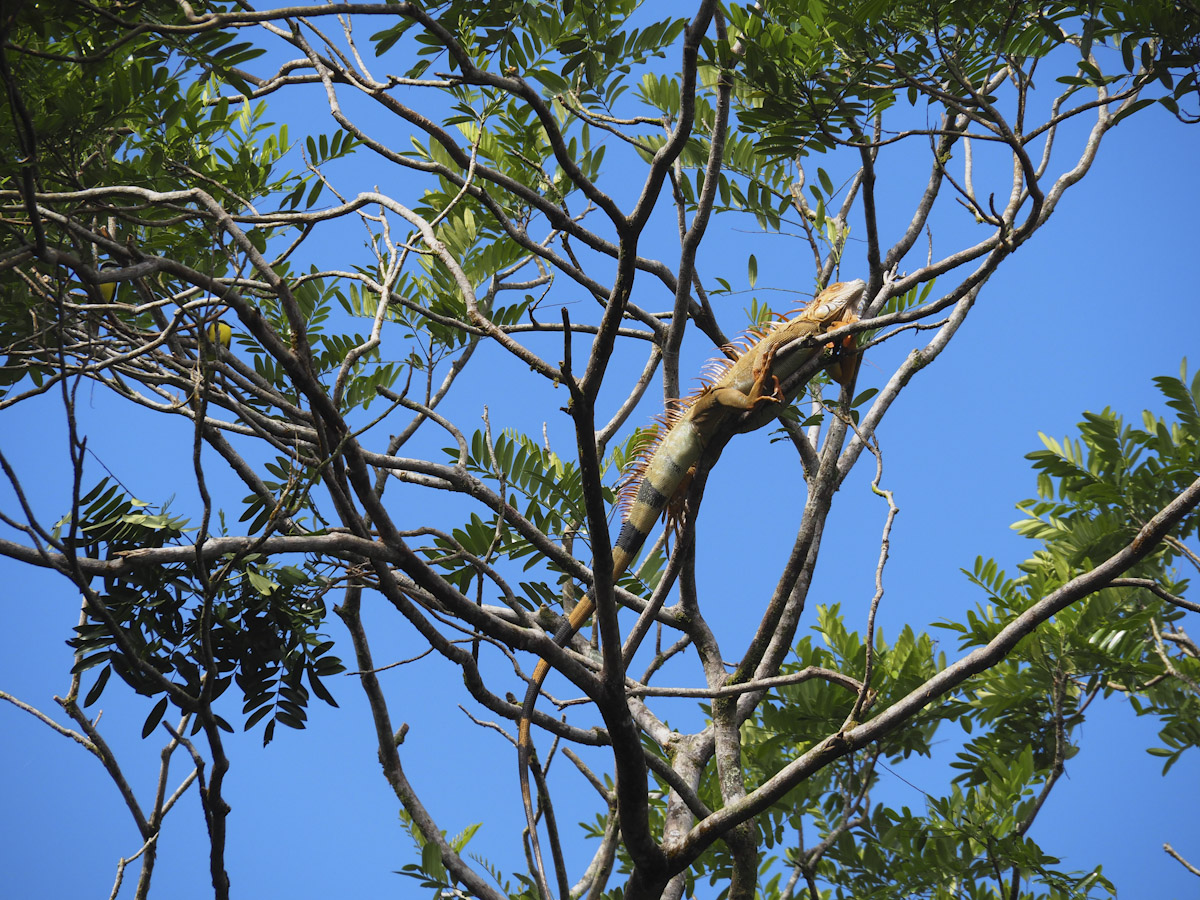
During the first ten minutes of our hike, Machete told us that the Osa Peninsula shelters the largest remaining population of jaguars and tapirs in Costa Rica but added, to tame our immediate euphoria, that in twenty-five years on the Peninsula, he only managed to see one jaguar (remember this guy takes this stroll through the jungle twice a week). But to make up for our slight disappointment, he promised to do his best to find a tapir. Apology accepted.
Entering the jungle is like opening your baking oven at home. With the difference being that at home, you close the oven after fetching whatever dish you chose to overcook or burn. Here, in Corcovado, you’re off for three days of boiling heat, penetrating humidity, ticks and venomous creepy-crawlies in every corner.
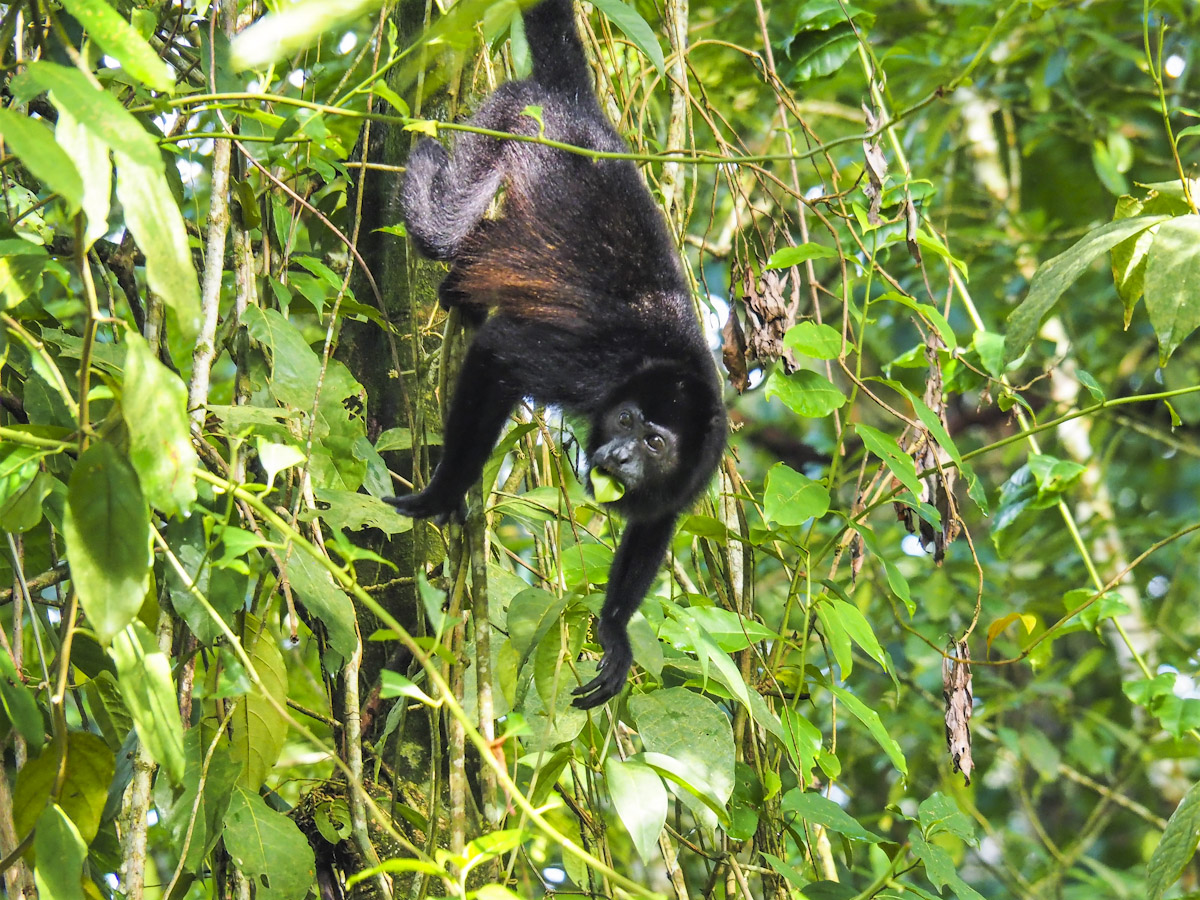
Just after twenty minutes of walking (and sweating, lots of sweating!) we saw leaves falling like snowflakes from the tree canopies. Machete stopped and hushed: ‘Spider Monkeys! They’re curious.’ Indeed, a whole group of spider monkeys came to see who entered their territory. And this was the moment I thought: congratulations mate, you really made it to the jungle! I didn’t care about the cistern of water on my back, the sweat dripping from my nose or the millions of bugs buzzing around me. I WAS IN THE JUNGLE! It was fabulous! And this was just the beginning!
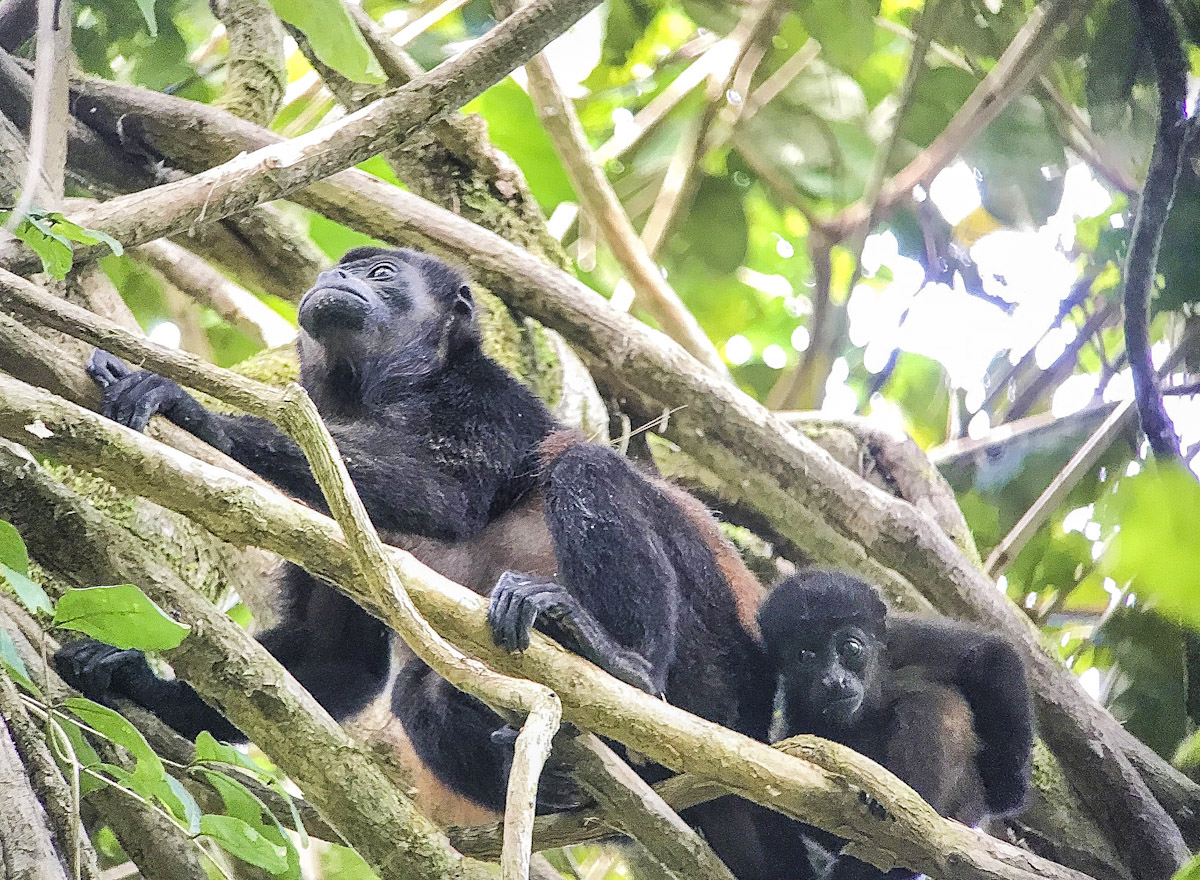
I never dreamed of seeing so much wildlife on such a relatively short hike. In fact, there were moments when we lowered our heads from watching spiders, capuchins or howler monkeys in the trees just to see an anteater passing by. Or one of the countless coatis we encountered on the trail. And that’s even before you start counting the birds. I’m no birder so to me, birds are mostly beautiful feathered creatures but I can’t remember their names or their species. But here, in Corcovado, I spotted a bird I’ll probably remember until the last of my days. We were fortunate enough to see a harpy eagle. Now, if you’re like me and have no clue about birds, I suggest you google the words harpy eagle and claw to get an idea why I remember that beast’s name.
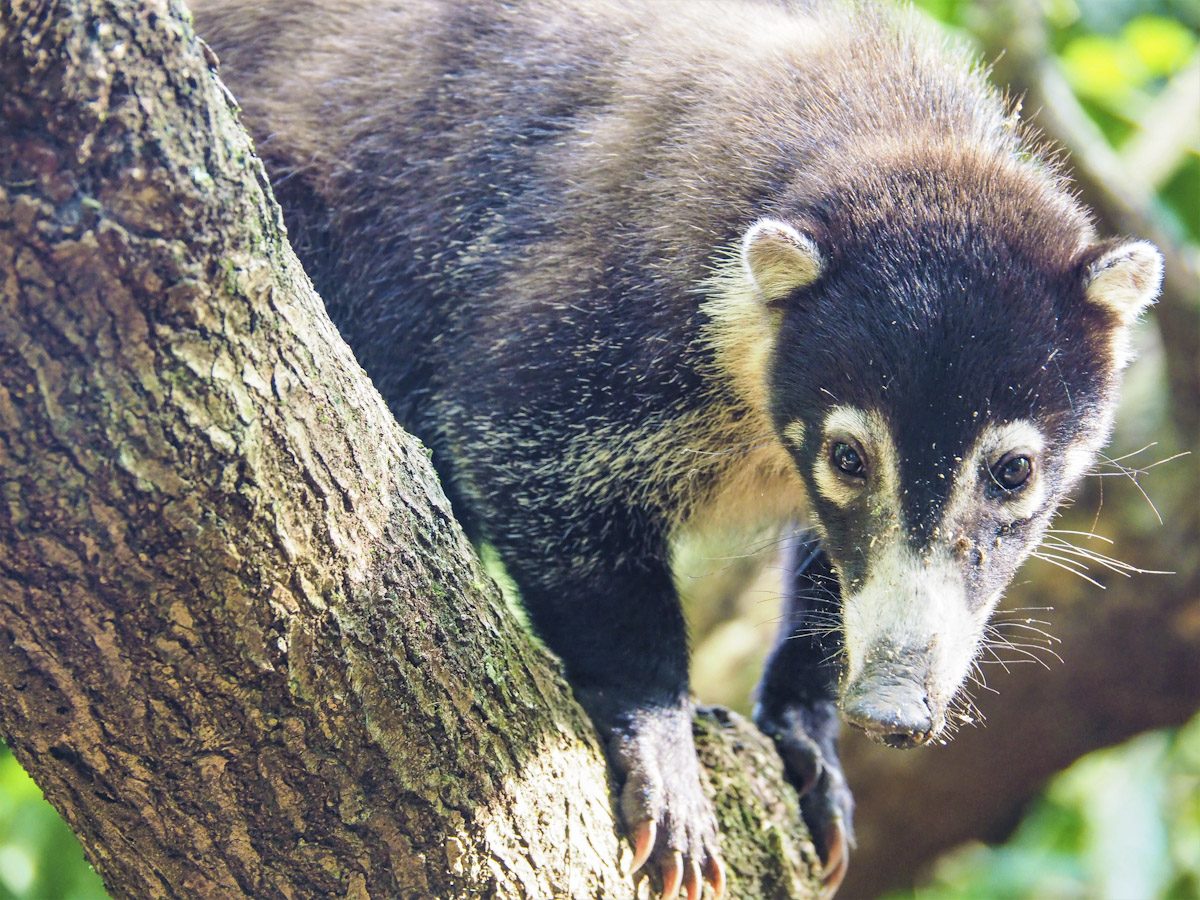
But the wildlife of Corcovado isn’t the only thing that makes this hike a once in a lifetime experience. The flora is just as impressive as the animals. In fact, the gigantic trees with their sweeping roots, surrounded by lianas and tree vines were the image I had in mind since Axl Rose. And here I was, standing amongst them, surrounded by a cacophony of the wildest animal noises one can possibly imagine.
After two hours, we arrived at the first river crossing. In fact, we stood on a pristine beach where said river flowed into the Pacific Ocean. The river was more like a little stream that dispersed largely on the beach so all we had to do was take of the shoes and walk through knee-deep, refreshing water. Ah, piece of cake!
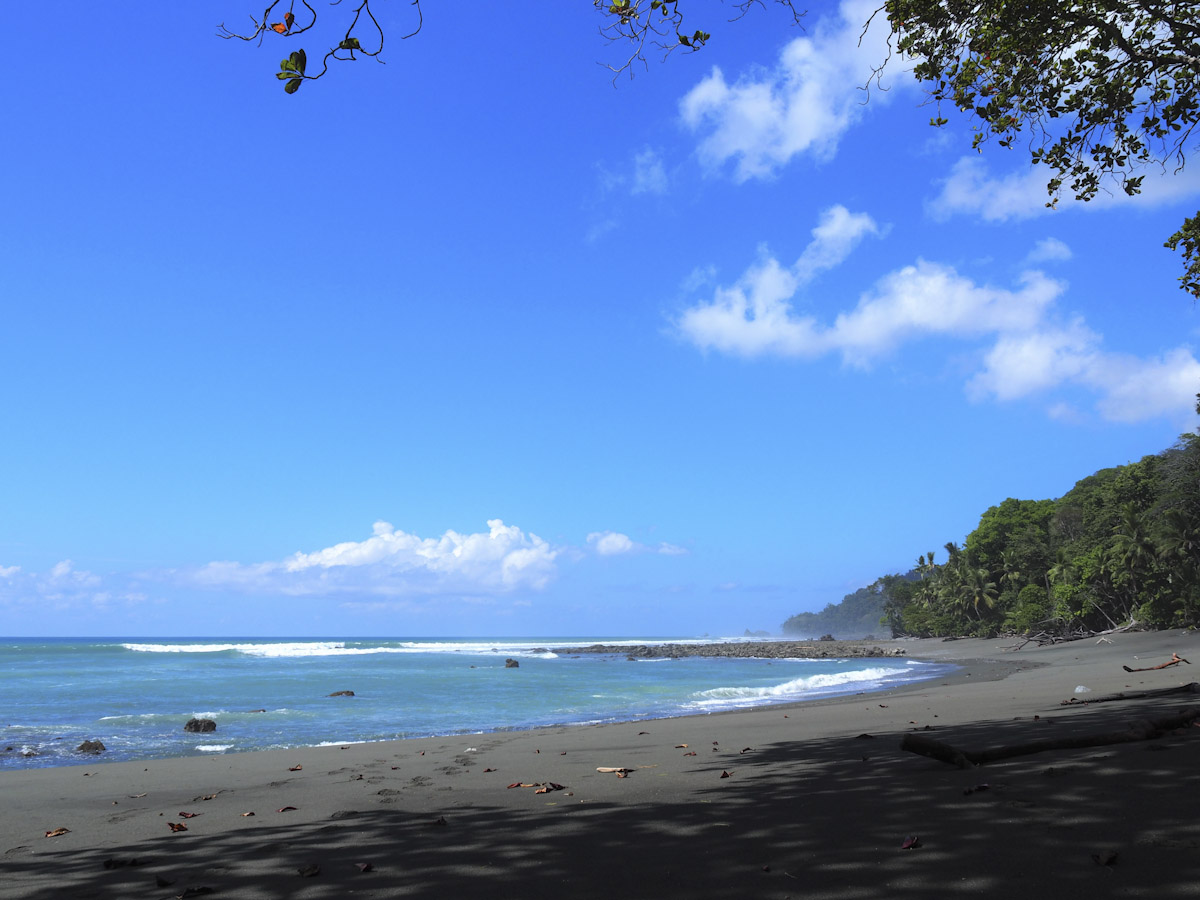
– “Machete, are there more river-crossings to come on our trail? This is nice”.
– “Yes, there are! The next one is close to Sirena Ranger Station. But it’s much wider and deeper. Oh, and it’s teeming with salt water crocodiles and bull sharks”.
Machete simply smiled… For the next two kilometers, the trail led over a pristine beach. Now, if you hear the word beach, you probably have a nice couple of beach chairs, a fancy cocktail and a good afternoon nap in your mind. In this case, think more of a marvelous beach in terms of looks, but lacking all the niceties these places usually come with. In fact, trotting trough ankle deep, scorching sand with a relentless sun burning from above and a heavy backpack pulling down your shoulders might alter your ideas of beach fun. More so if you have to hurry since the tide is coming in and you absolutely have to pass the beach before high tide. But nevertheless, the wild Pacific Ocean to your left and the dense jungle with its wildlife hubbub to your right, separated only by a strip of white sand is an image that regularly pops up in my mind since.
(…) trotting trough ankle deep, scorching sand with a relentless sun burning from above and a heavy backpack pulling down one’s shoulders might alter one’s ideas of beach fun.
Back into the rainforest, we had to venture a bit deeper into the sticks since the forest near the coastline was too rugged. Now think of switching your oven from warm-keeping function to grill. You suddenly realize that lost in the jungle means you are probably going to die from heat exhaustion and humidity instead of wild beasts. Machete managed to find heaps of other wildlife including many monkeys, sloths, bat colonies hanging under giant umbrella leaves, peccaries, boa constrictors, coatis all over the place as well as the promised tapir.
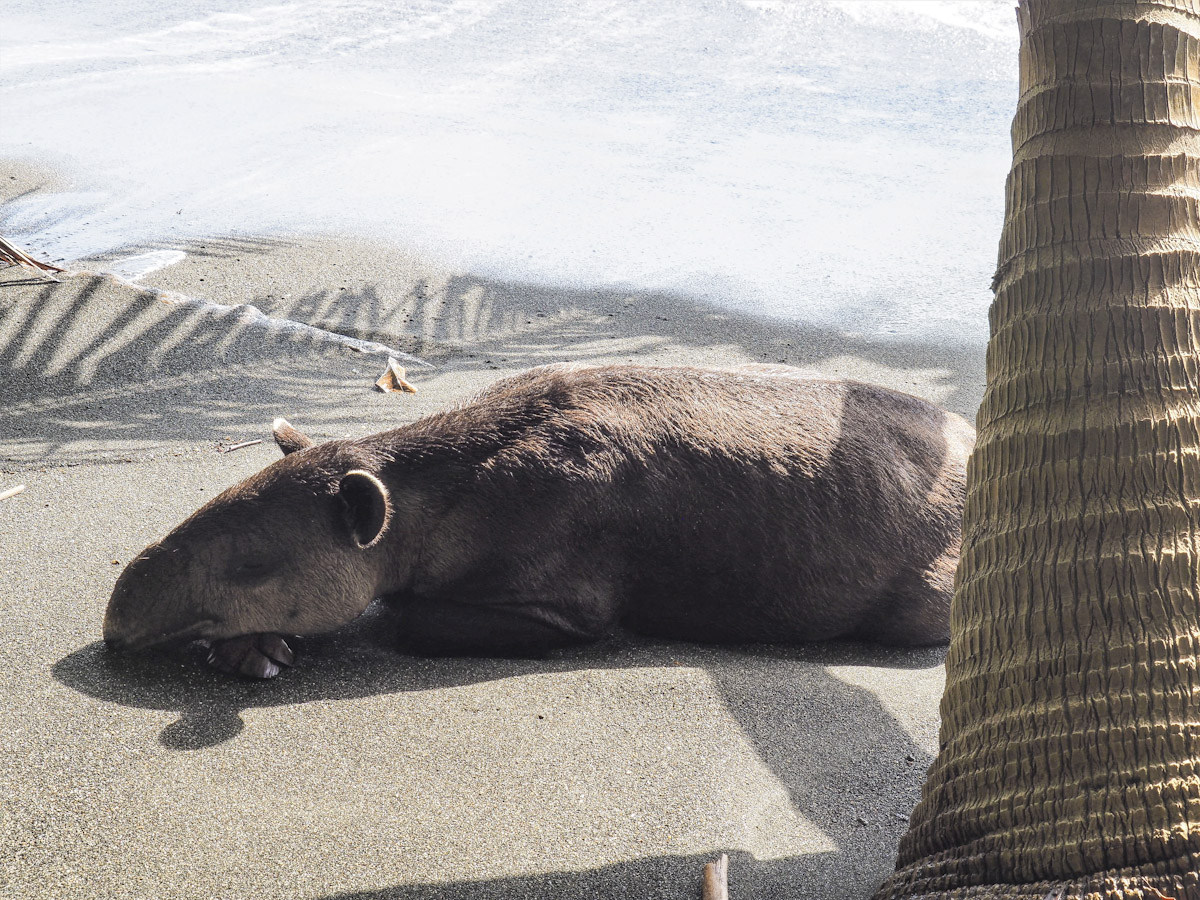
But the perspective of that river with its crocs and sharks loomed over our heads for hours until we finally arrived at the shores of Rio Claro. This was nowhere like the little puddle we waded through this morning; this was a full-grown river the size of the Moselle. We had to wait for over an hour to let the unusually high tide abate enough for us to cross the water. So, we held our backpacks with our clothes and belongings over our heads and waded trough sometimes chest-deep water. The river lived up to its name and was crystal clear. At least, we’d have a clear view at our fate if death approached from below. But we managed to reach the opposite shore with all of our limbs in place and stepped out of the water as freshly baked, diehard explorers (in soaking wet underwear).The rest of the trail to Sirena Ranger Station was a walk in the park.
The river was crystal clear. At least, we’d have a clear view at our fate if death approached from below.
A handful of hikers from the trail as well as people being ferried in by boat from Drake Bay stay in said station. Sirena accommodates some 30 people. After some devastating reviews on Tripadvisor, the Station was recently refurbished and is quite okay today (we stayed there in 2018). Visitors sleep under one big roof in bunkbeds equipped with mosquito-nets. Toilets and showers were in good condition and clean, food was the typical Costa Rican buffet; no haute-cuisine but palatable. There’s a little grocery store on site if you crave some sugar or need a band aid.
The next morning, we were awakened by the screams of howler monkeys (they tend to scream in the early morning to communicate their position to different clans. Just like your teenage kids do via snapchat, tik tok or whatever on their smartphones). Now if you have seen howlers but not heard them before, you might be surprised by the diabolical noises these beautiful, little creatures can make. Just think of a zombie apocalypse. With your home cinema turned to the max (hear their sounds at the bottom of the aticle).
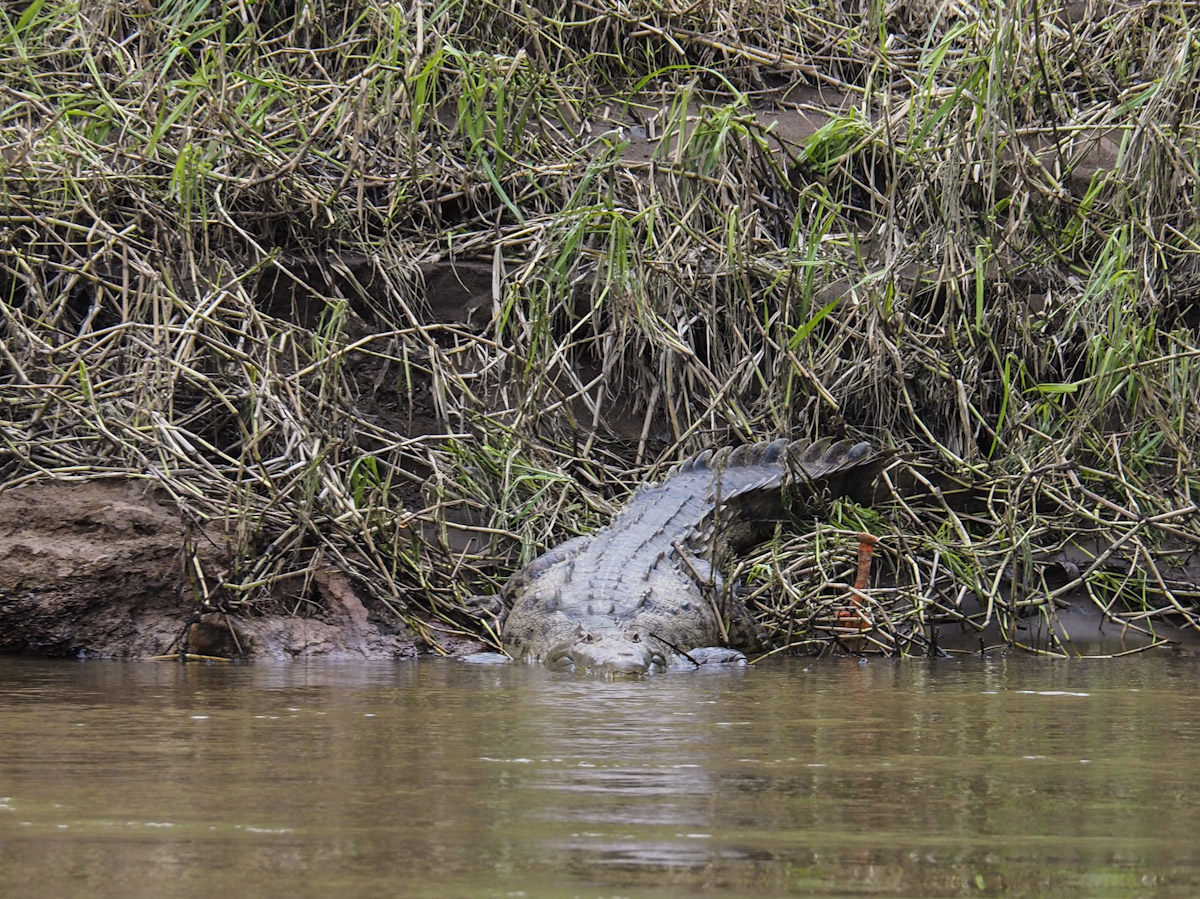
Machete took us to the same Rio Claro we crossed the day before and surprise; some three-meter-long salt water crocodiles quietly passed us on their way to the ocean (yes, they go for a swim in the ocean. That’s why they are called salt water crocodiles. They feel at home in fresh as well as saltwater. Keep that in mind when you go for a swim on any beach in Costa Rica). Machete tells us crocs are usually not that dangerous to humans. He says it’s when they are fed by humans tossing their waste into the rivers that they become dangerous. So, in a way, people are putting themselves on the croc’s menu.
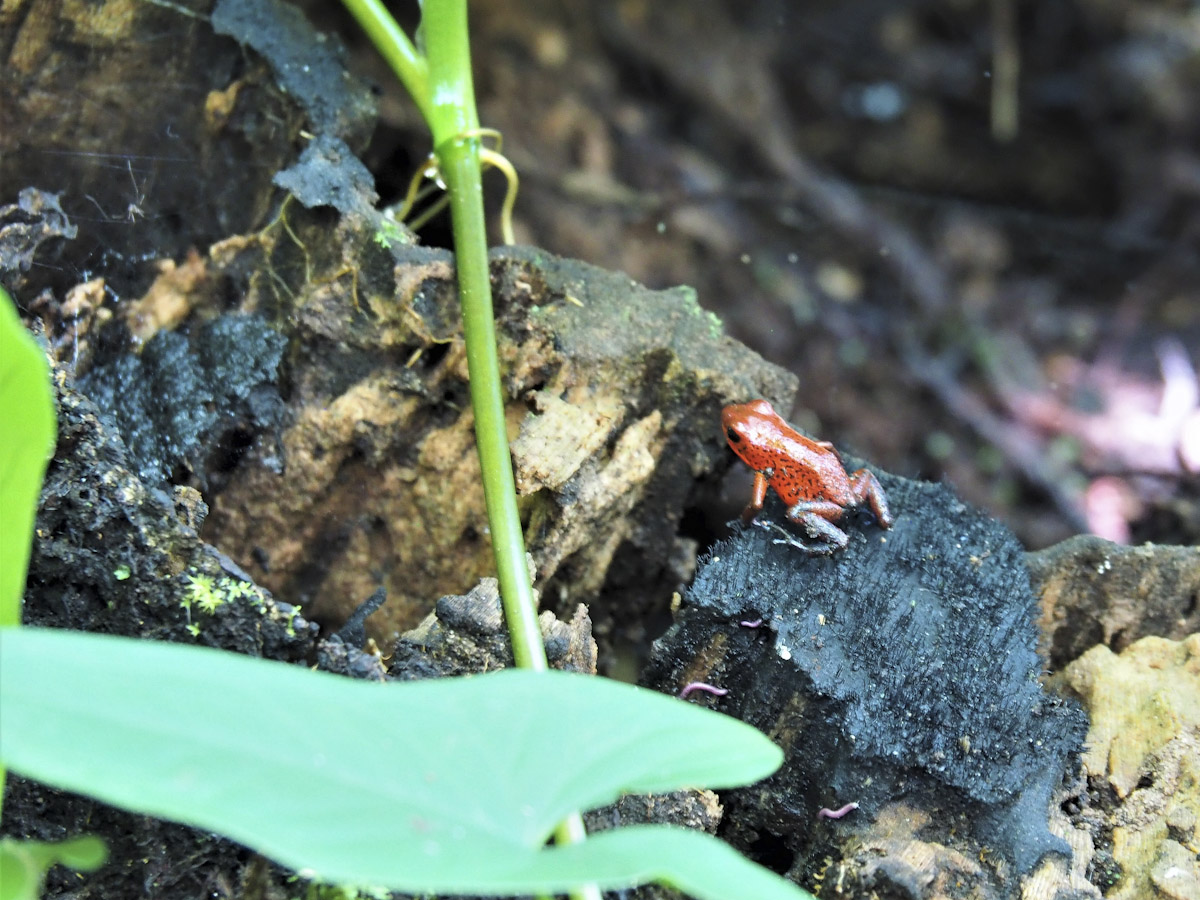
The rest of the day was spent strolling a few kilometres around the vicinity of Sirena station, seeing heaps of other animals and stepping on a terciopelo, one of the deadliest snakes in the world. I don’t want to go into the details but there’s a reason I celebrate two birthdays a year; my real one as well as the day I stepped on that danger noodle and survived. Machete said: it shouldn’t be here at that time of the day. Then he wondered why it didn’t bite since the Terciopelo is a highly aggressive snake. He explained that I would probably have died after some 40 minutes. He then added that the last 30 minutes of said 40 minutes would probably have been unpleasant. I liked Machete, he was a funny guy. And then, like a ray of light, it struck me why Machete was wearing knee-high rubber boots all the time. Two days ago, I thought what kind of beginner would take a strenuous three-day hike trough the jungle in a pair of Wellingtons? Well, guess who’s the beginner here.
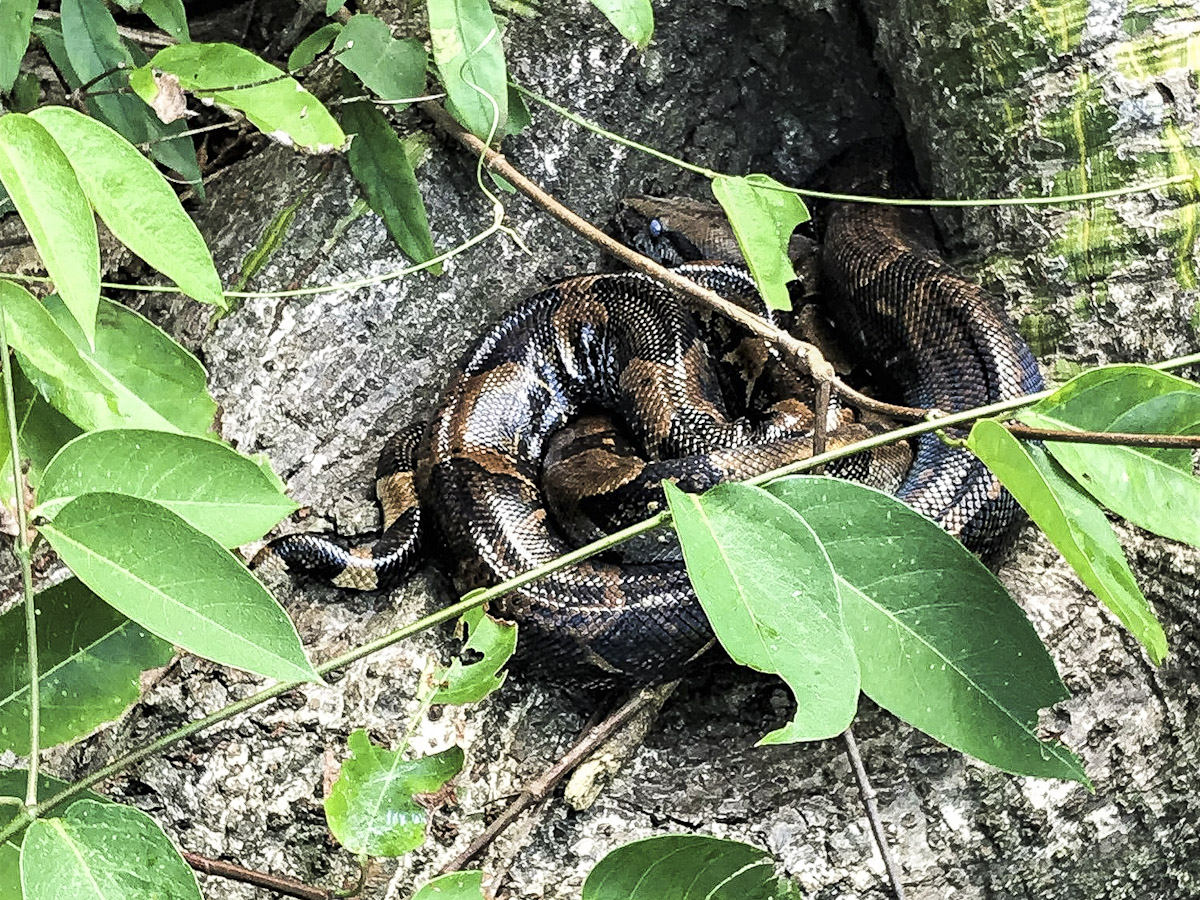
On the third day, after breakfast, we stepped onto a boat that brought us to Drake Bay. The one-hour trip along the coastline of the Osa Peninsula was just like the previous two days in Corcovado; breathtaking. That evening, on the porch of our hut overlooking Drake Bay, I wondered if Sir Francis Drake, the famous explorer-to-turn-pirate who gave this bay its name, had Rum & Coke in a can (like the one I had in hand now) when he first landed here to stash his loot.
I think it’s safe to say today; we saw the jungle. It was strenuous, hot and sometimes a bit dangerous but it was worth the effort. In fact, it was one of the most overwhelming experiences I ever had.
So, if you plan a trip to Costa Rica (or any other country or place known to be populated by potentially life-threatening animals): always keep your eyes peeled and never ever underestimate any wildlife. If you do so and don’t act foolhardily, there’s no reason to choose the Black Forest over the jungle.
PURA VIDA, as the Ticos use to say…
PS: Now if you haven’t heard howlers before, you can listen to our record of them them here. You might be surprised by the diabolical noises these beautiful, little creatures can make. Just think of a zombie apocalypse!!


